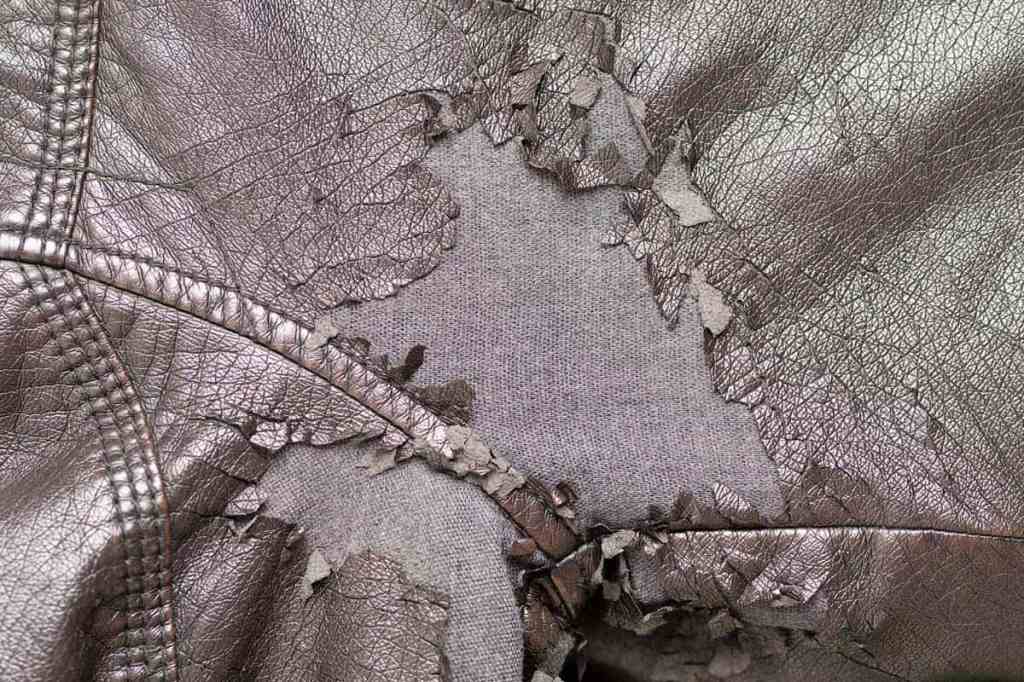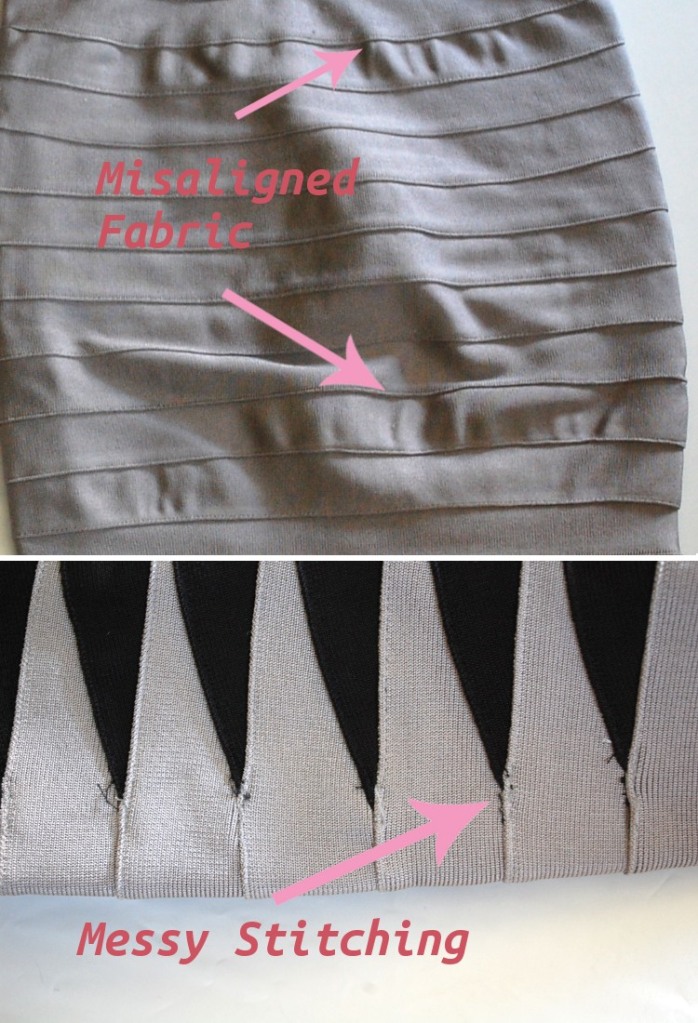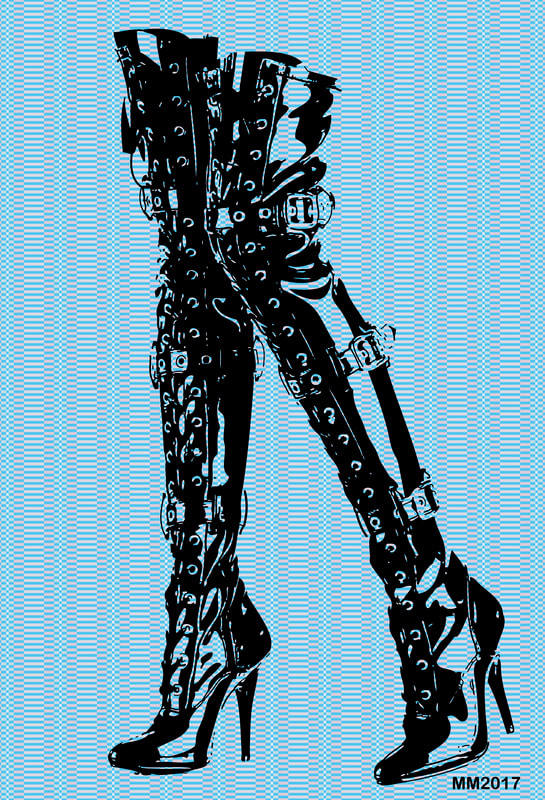When I was nine years old, in Montreal, I used to take a shortcut through a field to get to school. One winter day, crossing the frozen field, I crashed through the ice. Luckily for me, it was not deep. It was scary and freezing. I managed not to lose my boots which were weighed down with icy water. I walked in those wet soggy boots for the rest of that winter, they never dried up. I told no one, especially not my mother, for she was a very strict and incredibly thrifty woman, perhaps not by choice. Those boots were meant to be worn until I grew out of them. Raising three children on one measly salary, was a feat, requiring sacrifices and creative solutions.
My mother sewed all of our clothes. In order to save, she would get one pattern and enough fabric to sew 3 identical dresses for my sisters and me. That was in the 60s when Montreal was a fashion city and the city’s garment industry was still vibrant. Every day, on my way to school, I was awestruck by the colorful and audacious patterned fabrics, low-cut jeans, and platform shoes. Daring new designs such as collarless shirts and jackets, miniskirts, and fringes, never seen before. Everything was changing so fast. I couldn’t wait to work, earn my own money and buy my own clothes.
Funny how things work out though. In the early 70s, I left my family home, without their consent and moved across the country, to Vancouver. Life was tough on my own, working and studying, without any parental support. Not only could I not afford to buy trendy new clothes, but unlike Montreal, Vancouver was not a fashion city and the pickings were slim, to say the least. That’s when I started buying clothes in second-hand shops and vintage shops.
I would alter these, to fit me, or change the pattern altogether. I can’t even count how many zippers I sewed into sleeves and pant legs, during my punk years. At times I only bought a dress for its fabric, which I would sew into a unique top, dress, or jacket. I had fallen in sync with a whole generation of young people who were actively rejecting consumerism and the use of synthetic fabrics, whether by choice or circumstances. What happened since then?
My days of shopping in vintage and second-hand shops abruptly came to an end when I moved to the fashion capital of the world, Milan, in the year 2000.
Boots played a necessary role in my life from the day I started walking. Since I was raised in Eastern Canada, where winters are long and brutal, wearing boots for 9 months out of the year, was not unusual. I also worked in film for over a decade and I had to wear steel-toed boots on film sets, regardless of the weather conditions, winter or summer.
Following my incident in that frozen field in Montreal, I began having dreams that played out more like nightmares, for these were anxiety-ridden. There was a recurring theme centered on me being in a crowded station, street, or a dirty public washroom and suddenly realizing I was barefoot. I felt incredibly vulnerable and woke up distressed.
This might explain why I started collecting cowboy boots, tall and short and in a variety of colors. There was something about a well-crafted pair of cowboy boots that gave me a sense of security. These are sturdy, reliable, and comfortable, with a tall shaft that protects your ankles, shins, and calves and they last for years on end. I had a special walk-in closet for these and took good care of them, until the summer of 1999 when I decided to sell the entire collection, along with practically everything I owned, and relocated to Europe.
There are days, even 22 years later when I regret having parted with my cowboy boot collection. Especially given the price of quality well made footwear these days.
Once I left Canada, for the warmer winter climate of Italy, it didn’t take long for me to start working on my new collection with made in Italy boots. Initially, I insisted on wearing boots in summer, especially since it felt safer riding a scooter with boots than sandals. By 2003 with the first intense heatwave, I lived through in Milan, I put away the boots for the summer months.
In Milan, I discovered thigh-high boots to be the perfect solution for driving the scooter during the winter months and I developed a serious addiction to thigh-high boots which still persists. It is similar to having pangs for some distant lover.
Some boots I’ve worn to the ground, others are still sitting intact in my closet, worn a few times only, and these are in good company with a slew of jackets, shirts, and dresses from my corporate days that no longer see the light of day.
Several years ago I started having this nagging feeling that less was better. When I traveled I found I was perfectly happy with the few items I had stuffed in my carry-on luggage, although, even then I managed to pack stuff that I wouldn’t wear. I consequently gave away a good part of what I was not wearing to a you g mother and her teenage daughter.
How many different hoodies, dresses, jackets, and jeans do you have and yet you keep wearing the same two all year? Most people wear 20% of their wardrobe 80% of the time and yet the fast-fashion merry-go-round keeps consumers spinning their wheels and filling up their online carts.
The average consumer purchases 60% more clothing now than 15 years ago, however, these lower quality items being purchased last half as long. Cheap synthetic fabrics and badly sewn together garments create a vicious cycle that may be advantageous for fast fashion brands, just not as beneficial for the consumer and the environment.
I went through my closet a month ago and the irony of it all is that items I purchased anywhere from 20 to 30 years ago are in better shape, almost new, whereas any garment purchased over the last 5 years is either looking shabby or ready to toss. I’ve have had to toss a significant number of boots, shoes, and jackets that literally fell apart within one or two years and could not be mended or repaired.
For example, boots made with fake leather that literally come unglued from the soles within a few months of wearing, cannot be repaired, since often there is barely enough material to work with or the material and workmanship are not conducive to repairs. Consumers have lost their right to repair anything from a pair of boots to their computers.
Fast fashion flourished in the early 2000s coinciding with H&M’s opening in New York and my relocation to the fashion city of Milan. That is pretty much around the time that polyester replaced cotton as the most in-demand fiber in the industry, and from thereon dramatic changes ensued in the production and consumption of clothing worldwide.
My mother, having been a seamstress, was what I would label a fabric snob. She was not impressed with synthetic fabrics and used to say they made her skin cringe. Of course, synthetic fabrics have come a long way since then, and now these cleverly imitate any number of quality fabrics.
For the last two decades, and thanks to e-commerce, fast fashion picked up speed, widened its reach, and increased production. Fast fashion brands such as Zara, H&M, and GAP, amongst others, released anywhere from 600 to 900 new garment styles a week.
Those days must be quickly coming to an end. The reliance of fast fashion on fossil fuels is nothing new to us and it’s undeniably the backbone of the fast fashion business model. Now with water and resource shortages, and vertiginous increases in fuel costs I’m imagining it will prove difficult for fast fashion to continue in its race against time, and inflation. Add to that the fact that more and more consumers are becoming aware of the importance to reduce waste and expenses.
While the responsibility to break the fast fashion model lies with the major stakeholders and policymakers, we as consumers have an important role as well. We must put an end to compulsive shopping and buy only what we really need, when we need it. Consumers must contribute to achieving a more sustainable future, by buying less and developing an appreciation for quality.
What should determine the value of an item? In my opinion durability and craftsmanship are synonymous with quality.
Renewing our wardrobe, every season, by buying clothes that fall apart after a few washes might have been justifiable, in some warped sense, by low costs and consumers’ insatiable desire for variety, but that is no longer a viable option.
If you stop to think about it fabric is one of the most important components in our daily lives, from the clothes we wear to the upholstery of our home furniture and cars, to our bed linen. The fabric used will determine the value, comfort, and durability of the item in question. Not all fabrics are suitable for all applications and not all fabrics are alike when it comes to quality.

For example, cheap or ill-suited fabrics in upholstery will quickly turn that new sofa into a junkyard piece as the fabric stretches, thins, fades, easily stains, and rips at the seams. Have you purchased any faux leather items for your home or wardrobe, to see these flake apart in no time even when barely used? I’ve had two faux leather jackets fall apart on their own while hanging in my closet. Maybe these items should have an expiry date, like dairy products.
Buying knockoffs can be tempting but beware of fabric quality and stitching. The devil is in the details. This image shows a badly constructed Leger knockoff, which lost its shape after the first wash and is ready to be tossed.

As a consumer, you owe it to yourself to know the difference between valued fabrics and cheap fabrics. Whether you are buying new furniture for your home, a new suit, or a special dress, the fabric used and craftsmanship will make all the difference.
High-end, natural textiles typically come with a price, however, when building a solid, timelessly elegant wardrobe, these fabrics are worth the investment. Silk, cashmere, leather, and linen have long been highly acclaimed, sought after, and more expensively priced for obvious reasons.
If your closet is full and you still can’t figure out what to wear, it may be a sign that you have too much and it is time to let go and reduce. You may have outgrown some of your wardrobe items, they may no longer be in fashion and maybe it’s stuff that you wouldn’t be caught dead wearing now.
How many items can you count in your wardrobe that you’ve only worn once, if at all, and how many did you forget you even had? Buy less and when you do buy, opt for quality, because in the long run quality and durability will pay off.
Aside from having that favorite suit, dress, or jacket still looking and feeling new for many years ahead, clothing made with quality fabrics can be resold at a good value. My cowboy boot collection sold very well.
Whether you are investing in your home or wardrobe, learn to recognize quality so you can make smart purchases, and before buying any new clothing item ask yourself, will I wear this at least 30 times? Unless the answer is yes, don’t purchase it.
All this takes me back to my mother, that throughout her life remained frugal and thrifty even when she had the money to spend. It may have been due to her being a child at the end of WWII or finding herself married with three children by the age of 24, that made her a prudent and astute consumer, either way, it stayed with her for life. I am grateful for her example. I too, like many, was temporarily swept away by compulsive shopping, but I can proudly say I am healed.
